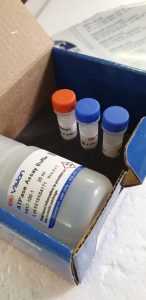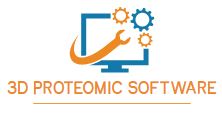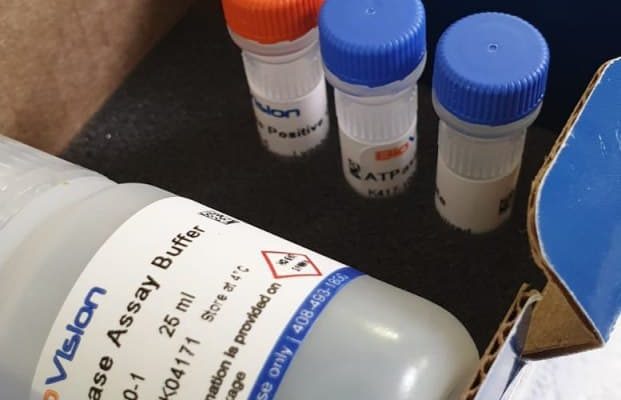The perivitelline layer that surrounds the egg yolk performs a basic position in fertilization, in egg protection, and within the improvement of the avian embryo. It’s shaped by two proteinaceous sublayers which might be tightly related and shaped by distinct feminine reproductive organs. Each constructions are assumed to have their very own useful specificities, which stay to be outlined. To characterize the perform of proteins composing every sublayer, the primary problem is to determine the circumstances that may enable for the mechanical separation of those two intricate layers, whereas limiting any structural harm. The second step is to optimize the experimental circumstances to facilitate protein solubilization from these two sublayers, for subsequent biochemical analyses.
The effectivity of this method is assessed by analyzing the protein profile of every sublayer by Sodium Dodecyl Sulfate-Poly-Acrylamide Gel Electrophoresis (SDS-PAGE), which is anticipated to be distinct between the 2 constructions. This two-step process stays easy; it requires classical biochemical gear and reagents; and is suitable with additional in-depth <em>proteomics</em>. It might even be transposed to different avian eggs for comparative biology, figuring out that the construction and the composition of the perivitelline layer has been proven to have species-specific options.
As well as, the non-denaturing circumstances developed for sublayers separation (step 1) enable their structural analyses by scanning and transmission electron microscopy. It might additionally represent the preliminary step for subsequent protein purification to research their respective organic actions and <em>3D</em> construction, or to carry out additional immunohistochemical or useful analyses. Such research would assist to decipher the physiological perform of those two sublayers, whose structural and useful integrities are determinant standards of the reproductive success.
Simplified ARCHITECT microfluidic chip via a dual-flip technique permits steady and versatile tumoroid formation mixed with label-free quantitative proteomic evaluation
Current years, microfluidic three-dimensional(<em>3D</em>) tumor tradition method has made nice progress in tumor microenvironment simulation and drug screening. In the meantime, as their performance and complexity enhance, it’s tougher for present chip fashions to selectively accumulate specific-layer cells from tumoroids for additional evaluation. Furthermore, a simplified and sturdy technique for tumoroid formation with extremely constant measurement and repeatable <em>3D</em> morphology is comparatively ncessary. Right here, we report an ARCHITECT (ARtificial CHIp for Tumor Permits Confocal Topography statement) chip, via a dual-flip technique to implement easy tumoroid institution.
With this ARCHITECT chip, different-layer cells of curiosity may very well be collected from tumoroid for label-free quantitative(LFQ) <em>proteomic</em> evaluation. For utility demonstration, we primarily verified this platform for lung carcinoma (A549) tumoroid building and <em>proteomic</em> evaluation at out layer. Our knowledge point out that the out-layer cells of A549 tumoroid present extensively distinct <em>proteomic</em> expressions in comparison with two-dimensional cultured A549 cells. The up-regulated proteins are primarily associated to tumorigenicity, proliferation and metastasis.
And the differentially expressed proteins are primarily related to lipid metabolism pathway which is important to tumor development and proliferation. This platform offers a simplified but sturdy method to attach microfluidic tumoroid building and LFQ <em>proteomic</em> evaluation. The simplicity of this system ought to open the best way to quite a few functions similar to discovering the progressive targets for most cancers remedy, and learning the mophological and <em>proteomic</em> heterogeneity of different-layer cells throughout the tumoroid. This platform ensures steady batch-to-batch tumoroids formation and permits excessive decision confocal imaging. Furthermore, an preliminary cell density as little as 65 cells per chamber is environment friendly to ship a tumoroid.

Chemical-based major human hepatocyte monolayer tradition for the examine of drug metabolism and hepatotoxicity: Comparability with the spheroid mannequin
Historically cultured monolayers of major human hepatocytes (PHHs) deteriorate inside days and thereby turn into unsuitable for drug-related research. PHH spheroids (<em>3D</em> PHHs) preserve liver capabilities for weeks, however are significantly extra demanding. Not too long ago, a chemical-based method (5C PHHs) succeeded in long-term tradition of hepatocyte monolayers, however it stays unclear whether or not the drug-related capabilities are preserved.
To make clear this, we in contrast the 5C and <em>3D</em> PHHs by way of gene expression evaluation, <em>proteomic</em> evaluation, performance (basal and induced actions of consultant CYP450 enzymes and urea and albumin secretions), survival in tradition, and sensitivity to consultant medicine. In all comparisons, which spanned tradition durations of as much as Four weeks, the 5C PHHs carried out at the very least in addition to the <em>3D</em> PHHs.
Therefore, the novel 5C PHH monolayer format combines the comfort of the standard monolayer format with the performance and maintainability of the spheroid format. Our outcomes recommend that 5C PHH monolayers can be utilized extra conveniently and effectively for high-throughput drug screening, preclinical drug security evaluations, and mechanistic research. Human epidermal keratinocytes are continuously uncovered to UV radiation. Because of this, there’s a vital want for secure and efficient compounds to guard pores and skin cells towards this environmental harm.
This examine aimed to research the impact of phytocannabinoid-cannabinoid (CBD)-on the proteome of UVA/B irradiated keratinocytes. The keratinocytes have been cultured in a three-dimensional (<em>3D</em>) system, designed to imitate epidermal circumstances intently. The obtained outcomes point out that CBD protected towards the dangerous results of UVA/B radiation. CBD-through its antioxidant/anti-inflammatory exercise and regulation of protein biosynthesis and degradation-protects pores and skin cells towards UVA/B-induced adjustments. Sooner or later, its long-term use in epidermal cells needs to be investigated.
[Linking template=”default” type=”products” search=”magnetic beads proteomics C18″ header=”2″ limit=”120″ start=”2″ showCatalogNumber=”true” showSize=”true” showSupplier=”true” showPrice=”true” showDescription=”true” showAdditionalInformation=”true” showImage=”true” showSchemaMarkup=”true” imageWidth=”” imageHeight=””]
CBD decreased the expression of proinflammatory proteins, together with TNFα/NFκB and IκBKB complicated and decreased the expression of proteins concerned in de novo protein biosynthesis, that are elevated in UVA/B-irradiated cells. Moreover, CBD enhanced the UV-induced expression of 20S proteasome subunits. CBD additionally protected protein constructions from 4-hydroxynonenal (HNE)-binding induced by UV radiation, which primarily impacts antioxidant enzymes.

